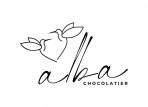Chocolate 101: Understanding the Art and Science of Chocolate-Making
Welcome to Chocolate 101, where we unravel the mysteries behind your favorite treat. At Alba Chocolatier, we take pride in our bean-to-bar process, ensuring every piece of chocolate is crafted with care, precision, and a deep understanding of both art and science. Let’s dive into the fascinating journey of how cacao beans transform into the delectable chocolate you love.
The Origins of Cacao
Chocolate starts its journey as cacao beans, harvested from the pods of the Theobroma cacao tree. These trees thrive in tropical regions near the equator, with origins tracing back to ancient civilizations in Central and South America. The word “Theobroma” means “food of the gods,” a fitting name given the reverence cacao held in ancient cultures.
Harvesting and Fermentation
Once the cacao pods are ripe, they are carefully harvested and opened to reveal the cacao beans surrounded by a sweet, tangy pulp. The beans and pulp are scooped out and left to ferment for several days. This crucial fermentation process develops the beans’ complex flavors and reduces their natural bitterness.
Did you know? The fermentation process also contributes to the development of chocolate’s characteristic aroma and flavor profiles.
Drying and Roasting
After fermentation, the beans are spread out to dry under the sun. This drying process reduces the moisture content, preparing the beans for the next stage: roasting. Roasting is where the magic truly begins, as it brings out the rich, aromatic flavors we associate with chocolate. Each chocolatier has their own roasting techniques and temperatures, which can significantly impact the final flavor.
Cracking and Winnowing
Once roasted, the beans are cracked open to separate the outer shell from the inner nibs. This process, known as winnowing, leaves us with the cacao nibs – the purest form of cacao. These nibs are packed with intense chocolate flavor and are the foundation of all chocolate products.
Grinding and Conching
The cacao nibs are then ground into a thick, gritty paste called chocolate liquor (despite its name, it contains no alcohol). This paste is further refined through a process called conching, where it is continuously mixed and aerated. Conching smooths out the texture and develops the chocolate’s flavor, resulting in a velvety, melt-in-your-mouth experience.
Fun Fact: The length of the conching process can vary from a few hours to several days, depending on the desired texture and flavor profile.
Tempering and Molding
To achieve that perfect snap and glossy finish, the chocolate must be tempered. This involves carefully heating and cooling the chocolate to stabilize the cocoa butter crystals. Proper tempering ensures the chocolate sets correctly and has a smooth, shiny appearance. Once tempered, the chocolate is poured into molds and left to cool and harden.
The Final Touch: Packaging
After the chocolate has set, it is carefully removed from the molds and packaged. At Alba, we take pride in our packaging, ensuring it not only protects the chocolate but also reflects the quality and artistry within. From eco-friendly materials to elegant designs, our packaging is the final touch in delivering a luxurious chocolate experience.
Join Us on a Chocolate Journey
Understanding the art and science of chocolate-making enhances your appreciation for every piece of chocolate you enjoy. At Alba, we invite you to join us on this journey, exploring the intricate process that transforms humble cacao beans into exquisite chocolate creations. Whether you’re a chocolate connoisseur or just beginning your adventure, there’s always something new to discover in the world of chocolate.
Stay tuned for more insights, recipes, and behind-the-scenes looks into our chocolate-making process. And remember, every piece of chocolate tells a story – savor it, enjoy it, and share it with those you love.
